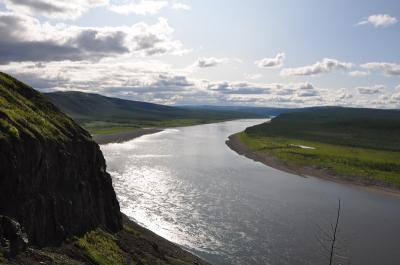Acid rain and ozone depletion may seem like modern problems but it has been connected to the Permian extinction 250 million years ago, a mass die-off so severe in Earth's history that even Mother Jones hasn't used it as a corollary of modern climate issues.
Contemporaneous volcanic eruptions in Siberia and the atmospheric effects of those eruptions long ago would have caused the devastation rather than leaving an outside light on. New results from a team including show that the atmospheric effects of these eruptions could have been devastating. Their work is published in Geology.
The mass extinction included the sudden loss of more than 90 percent of marine species and more than 70 percent of terrestrial species and set the stage for the rise of the dinosaurs. The fossil record suggests that ecological diversity did not fully recover until several million years after the main pulse of the extinction. One leading candidate for the cause of this event is gas released from a large swath of volcanic rock in Russia called the Siberian Traps. Using 3-D modeling techniques, the team predicted the impacts of gas released from the Siberian Traps on the end-Permian atmosphere.

This photo taken along Kotuy River in Arctic Siberia shows the base of the Siberian Traps volcanic sequence. Credit: Benjamin Black
Their models indicate that volcanic releases of both carbon dioxide (CO2) and sulfur dioxide (SO2) could have created highly acidic rain, potentially leaching the soil of nutrients and damaging plants and other vulnerable terrestrial organisms. Releases of halogen-bearing compounds such as methyl chloride could also have resulted in global ozone collapse.
The volcanic activity was likely episodic, producing pulses of acid rain and ozone depletion. The team concluded that the resulting drastic fluctuations in pH and ultraviolet radiation, combined with an overall temperature increase from greenhouse gas emissions, could have contributed to the end-Permian mass extinction on land.
Geology November 22, 2013, doi:10.1130/G34875.1, Source: Carnegie Institution




Comments